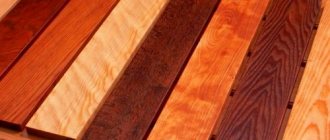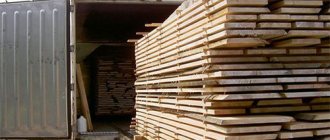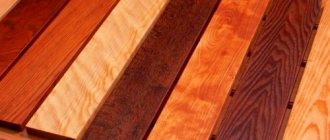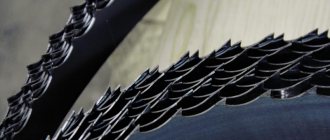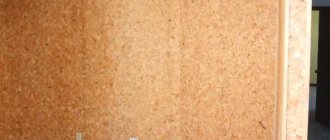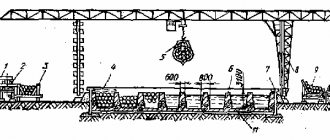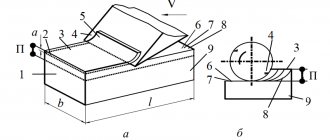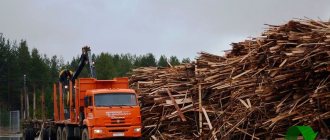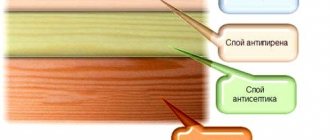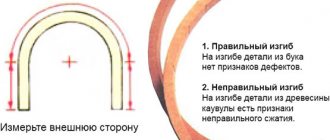For centuries, wood has been considered, although valuable, but a fragile material that is susceptible to rotting, attack by parasites, drying out and other troubles. It was only at the end of the last century that a process was developed in Finland to avoid damage to wooden products during use. Heat treatment of wood has become a salvation for lovers of structures and finishing made from this raw material. Now even the most inexpensive type of wood can look presentable and have a rich and noble shade.
Thermowood colors
There are two main colors - chocolate, or dark, and honey, or medium. The color of the material depends on the degree of heat treatment of the wood: the stronger it is, the darker and more saturated the color. Dark thermal wood has undergone deep heat treatment. It is more durable and dimensionally stable than untreated. But it loses strength. The choice of color for thermowood depends on the area of use of the material and the designer’s idea. The color shade depends on the type of wood processed. For example, a maple in a medium (honey) color will be different from a pine in the same shade. Coating thermal wood makes it darker. Different coatings change the shade of the material and its texture in different ways.
Production stages
Wood bleach
Thermal wood is produced in Moscow or another city using special equipment. At the same time, the production technology does not provide any additional components. Heat treatment of wood is carried out by exposing raw materials placed in a sealed chamber to steam. The blanks are made from oak, ash, beech, walnut, and less often pine. Initially, the technology of heat treatment of wood in its modern form was developed by Finnish specialists. The prepared raw materials in a closed module, in the absence of oxygen access, are subjected to multi-stage exposure to steam heated to 185-212 C. Such progressive heat treatment of wood has become used not only in Europe, but also in Canada and Russia. The following stages are involved:
- Heating the workpiece. First of all, equipment for thermal wood heats the material placed inside to 13-150 C. Next, using the cooking method, the wood is exposed to steam for 5 hours.
- Drying. Heat-treated lumber is dried, reducing the moisture level of the raw material to 10%. Thermally modified wood remains in the drying equipment for 2-3 days to achieve optimal parameters.
- Excerpt. In closed conditions, the temperature is raised and saturated with water vapor at elevated pressure. This technology process gives thermally modified wood its characteristic hardness and unique color. The palette changes depending on the thermal regime, and not on the duration of treatment. Resistance to external moisture increases, putrefactive phenomena are eliminated and further deformation does not occur.
Features of the technology
It must be taken into account that a mode of 190 C will only provide a decorative effect without significantly affecting the performance characteristics.
In most cases, heat treatment is carried out at 200-230 C. This increases resistance to rotting several times. This material can be used in the production of furniture, decor, window frames, and interior doors. The price of thermally modified wood, which has been exposed to more than 230 C, will be higher, since its properties will noticeably improve. The board will become resistant not only to rotting, but also to swelling. As a result, the material can be used for almost any outdoor work or aggressive environment, for example, in swimming pools, saunas, baths, etc. In Germany, heat treatment of wood, the price of which varies depending on the type of wood, the technology used, and can range from 25,000 rubles. up to 80,000 rub. per cubic meter, carried out in an oil environment. A dry edged board is placed in oil at 180-220 C, kept for 3-4 hours. How to make a thermal tree with your own hands is presented in the video.
There is also a technique for processing boards in inert gases and a nitrogen atmosphere at elevated pressure. Oxygen levels should not exceed 2%.
Comparative characteristics of wood thermal modification technologies are presented in the table.
| Name of parameters | Wood thermal modification technologies | |||
| Thermowood | PLATO | Retification | ONT | |
| Protective environment for thermal modification | Steam-air mixture with oxygen content below 3.5% | Superheated water | Steam-air mixture enriched with nitrogen | Heat transfer oils and vegetable oils |
| Thermal modification temperature, ºС | 180…230 | 150…200 | above 240 | 180…220 |
| Cycle duration TM, pine 50 mm thick and 8% humidity, hour | 48 | 120 | 10 | 12 |
| Present cost of equipment with a conditional productivity of 1000 m³/year, €/m³ | 50…170 | 134…200 | 77…215 | 50…200 |
| Cost of TM, €/m³ | 60…90 | 90…120 | 150…160 | 60…90 |
| The need for certification and registration of equipment in the Gostekhnadzor system | — | + pressure above 0.6 MPa | — | — |
The main stages of brushing wooden blanks
In general, brushing technology is accessible and can be performed by anyone who knows how to use carpentry tools. The key to quality work is the correct choice of wood and the availability of the necessary tools.
The production process of wood brushing consists of the following stages:
- The initial stage is cleaning. The dried wood is cleaned with a metal brush. Coarse sandpaper is also suitable for removing the top layer with soft fibers.
- Sanding - performed using a polymer brush or other abrasive to remove loose fibers. Coarse-grained sandpaper will also cope with this task if a metal brush was previously used.
- Coating a treated wood surface with stain or other dyes that will help highlight the structure of the wood.
- Polishing is done with a special lint disc or the finest sandpaper.
- Varnishing is carried out repeatedly. Each new layer is applied after the previous one has completely dried. The number of layers is determined by the color factor. To obtain a beautiful rich tone, it is recommended to coat the surface at least 3-4 times.
With the help of manual processing, the antique effect is obtained of high quality. Brushes of different hardness remove fibers sequentially until a beautiful pattern of the wood structure is obtained.First you need to prepare the tools and materials. In addition to the tree itself you will need:
• sandpaper of varying degrees of grain;
• set of brushes for brushing;
• stain (to obtain a beautiful shade you need to use several coating colors);
• transparent varnish intended for wooden surfaces.
Manual brushing steps:
• spray the wood with water to reduce the formation of dust in the air;
• with measured movements, moving along the grain, begin cleaning the surface with the coarsest brush (the intensity of work is selected individually depending on the type of wood);
• spray some water again and repeat the treatment, but with a synthetic brush;
• if the fibers are poorly separated from the base of the wood, it is necessary to burn the surface followed by cleaning with a medium-hard brush;
• sand using soft bristles or the finest sandpaper;
• apply a generous layer of stain to the wood, immediately removing excess;
• repeat the coloring using the same tone or a more saturated one (this will help to obtain a surface of different shades);
• dry the wood;
• apply a protective layer using transparent varnish (to create an expressive texture and reliable protection, it is recommended to repeat the varnish treatment 1-2 times).
The use of special chemicals (acids, alkalis, etc.) will help reduce the complexity of the process. But an aggressive environment greatly destroys wood; it is not always possible to obtain the desired effect, especially if there has been no previous experience in using chemicals. Therefore, when trying to create a brushed surface for the first time, it is recommended to choose the manual method.
Thermowood production technology
Methods and equipment for professional wood drying
Thermowood
– Finnish heat treatment technology at a temperature of 185-212ºС in a protected environment of saturated water vapor. At the moment it is considered the main and most common. The developer of the technology is Lunawood Oy, the equipment is manufactured by the Finnish Tekmaheat Oy and the Italian Baschild.
Bois Perdure
– French technology, translated means “long-living wood.” BCI-MBS equipment sequentially dries raw wood and then heats it to specified temperatures. The gases released during the drying process are burned with a special burner.
Plato
– Dutch double heating technology. The first time the wood is heated in an autoclave in a steam-water environment under a pressure of 16 atmospheres to a temperature of 150-180ºС, thermal hydrolysis occurs, then cooled to 40ºС and dried to a humidity of 8-10%. The second heating to a temperature of 190ºC is called “treatment” and occurs in a convection drying chamber with normal pressure and low humidity.
Westwood
– American “3D heat wave” technology. Everything is the same as with Europeans, only the air inside the chamber is driven by several fans.
| Restaurant “Square” in Odessa |
Retification
- French technology, developed back in the 70s, but introduced only in the 90s simultaneously with the Finns. Protection against oxygen occurs by injection of inert nitrogen gas. Heating occurs with gradual holding times of several hours, first at 80-100ºС, then at 160-180ºС and at maximum heating up to 220-260ºС.
Oil Heat Treated
– an exotic German technology in which wood is actually boiled in hot oil, after being dried and heated in air to 130ºС. The oil has a temperature of 180-220ºC, and is later extracted from the wood in an autoclave under reduced pressure.
Tavis
– Ukrainian technology that combines European experience and domestic developments. Heating occurs to 190-240ºС in an autoclave in a saturated steam environment, with exposure at certain temperatures.
Manufacturing Principles
Properties of wood: mechanical, physical, technological
The technology for manufacturing thermowood differs from conventional woodworking.
With the complete removal of moisture and a number of substances that contribute to decay, the wood lasts longer.
In the middle of the 20th century, research began aimed at increasing the strength and wear resistance of materials. This was due to the development of space programs. We have developed a technology that allows us to quickly remove some substances.
Wood contains hemicellulose (wood sugar). It promotes the appearance and development of fungus. Its removal allows you to increase the service life of the material several tens of times.
Thermowood is obtained by processing ordinary wood species in an airless environment at high temperatures.
Technological process
Production stages:
- Wooden blanks are placed in a vacuum chamber. Close, pump out the air, slowly warm up to 180 °C.
- The resulting steam is saturated with various chemical reagents. Then the temperature is sharply increased to 240 °C and high pressure is applied to the workpieces. This promotes the decomposition of hemicellulose. Then the environment conducive to the appearance and development of fungus, rotting, and decomposition of wood is eliminated. This stage is called the stage of increasing biostability.
- Under the influence of pressure and temperature, molecular changes occur in the structure of wood. The next stage is to stabilize the condition and consolidate it. Stabilization occurs due to cellulose crystallization. Depending on the production cycle, this can be achieved chemically or as a result of changing the cooling temperature.
Thermowood treated with chemicals is safe to use.
The technology for making something similar to thermowood at home is simple. You should take a well-dried base - a wooden board or MDF. From scrap materials, make a mold according to the dimensions of the base. The exception is the height, it should be a little larger. Then take well-dried sawdust and mix it with PVA glue to a thick consistency (60% sawdust, 40% glue). The resulting mixture is poured into a mold on a base, dried with or without special devices. After this, veneer is glued onto the thermowood.
The resulting material is not suitable for exterior finishing.
Positive and negative qualities
Thermowood:
- Eco-friendly. Does not emit harmful substances into the atmosphere.
- Has high wear resistance and strength.
- Not subject to rotting. Mold does not form on it.
- Does not deform due to temperature changes or exposure to moisture.
- Has high thermal insulation properties. Can be used as additional insulation.
- Can be of various colors and shades.
Disadvantages include high cost due to technological difficulties of production.
Where is it used?
The material is used for finishing steam rooms of baths and saunas, facades, and pediments. Thermowood looks more attractive than siding and other artificial materials.
Suitable for finishing paths to swimming pools. The boards are laid as flooring.
Material characteristics
Heat treatment gives wood many positive qualities:
- stability of size is the main positive quality that thermowood is endowed with. The material will not change its appearance from the influence of many negative factors. Thermowood, unlike ordinary wood, does not change shape due to moisture, because it has an equilibrium humidity close to zero and does not absorb steam;
- An important indicator is the long service life and strength of the material. Heat treatment increases the service life of wooden boards up to 20 times. Due to high temperatures, polysaccharides in wood partially disintegrate. The resulting protective qualities prevent the development of mold and the appearance of insects;
- thermowood is highly resistant to fire. Dry natural wood ignites instantly. The modification process reduced the risk of material ignition to a minimum;
- the aesthetic appearance of the material allows you to introduce original design ideas. The structure of thermowood is similar to elite species of tropical trees, surpassing them in durability.
Garden path made of thermodecking
Where is thermowood used?
Thermally modified wood is not only aesthetically pleasing, but also a reliable material for external and internal finishing of terraces, cottages, wooden houses, summerhouses and even floor coverings.
Thermowood is used everywhere:
- In gazebos, on summer verandas - such areas are unheated and open. That is why, when designing and constructing, you should think about using a stable and durable material that is “not afraid” of temperature changes, winds and heavy rainfall. As a result of using TMD, structural elements will retain their original quality and appearance: floors and walls will not crack or dry out - there will be no need to renew the coatings annually.
- On facades, thermal board cladding will last for many years and retain its original appearance. In addition, such a facade does not require special expensive maintenance - classical means will do.
- In baths, saunas, bathrooms and adjacent areas. Thermowood has excellent resistance to moisture, mold and mildew, heats up slowly and practically does not conduct heat.
- On country and garden paths. Such elements will not only decorate the site, but will also greatly facilitate access even in the most unfavorable weather conditions. The material can withstand increased loads, which ensures its durability.
Thermowood for construction - technology. With your own hands
Heat-treated wood can easily replace species used for outdoor construction.
Essential requirements for materials for the manufacture of structures exposed to weathering: they must be resistant to rotting, damage by insects and the influence of destructive factors (sun, rain, etc.), durable and stable.
And to these conditions it would be nice to add beauty and environmental friendliness. Are you saying that this doesn’t happen?
We invite you to get acquainted with thermally modified wood. This ideal material may be more affordable than you think.
Thermowood technology: not just drying
Thermal treatment of wood is not something new; it has been used since prehistoric times.
Primitive hunters burned the end of a wooden spear with a fire to make it harder. But it was only in 1990 that Scandinavian timber industry decided to take a closer look at the process in the laboratory. As a result of these studies, a technology has emerged that has been used in European countries for two decades and has begun to conquer North America, where thermowood production volumes are increasing annually.
Properties and scope of application
Wood is an environmentally friendly natural material that has an excellent texture and is absolutely safe for human health.
However, without additional processing, wood is not able to withstand unfavorable external factors such as high humidity, the action of biological microorganisms and insects.
The modern method of processing wood raw materials, thermal modification, has made it possible to obtain a new high-quality finishing material that has found wide demand in the market. Thermowood is lumber that has undergone additional heat treatment at temperatures from 180 to 240 degrees without the use of synthetic additives and compounds.
Thermowood is a unique finishing material that combines an environmentally friendly composition and amazing physical and mechanical properties:
- Dimensional stability when exposed to unfavorable
environmental factors - temperatures and moisture (unlike untreated wood, this indicator improves by 10-15 times, reducing the risk of swelling in a humid environment is reduced to 90%). - Hygroscopicity.
Wood moisture content is reduced to 4-8 percent, which is significantly lower compared to industrial drying of lumber in special chambers. The ability to absorb moisture in thermowood is reduced by 5-6 times. With a long stay in a humid environment and directly in water, the maximum humidity of the raw material does not exceed 9-10 percent, natural drying occurs almost instantly. - Long service life
, resistance to biological damage. Processing wood at high temperatures leads to the decomposition of polysaccharides, which, provided the humidity of the raw materials is low, minimizes the risk of damage by microorganisms, mold and fungus. - High thermal conductivity.
Thermowood is an ideal material for finishing baths and saunas, since its thermal insulation characteristics are 30 percent higher than those of natural wood. - The high density of wood
ensures that water is repelled without additional processing; lumber does not absorb moisture from the air. Wood after heat treatment is resistant to mechanical stress. - Ecological purity,
absolute safety for the human body and the environment. - High fire safety.
The hardness and density of thermally treated wood determine the slow combustion of the raw material. - Aesthetic appearance of thermowood.
After heat treatment, the decorative properties of lumber are noticeably improved - the spectacular structure of the wood and a noble dark shade appear. Heat treatment gives even inexpensive wood the appearance of valuable wood.
Thermowood is widely used for interior and exterior decoration of houses, baths and saunas. Due to high strength, dimensional stability and resistance to adverse external factors, a facade made of thermally treated wood will not lose its original appearance even after a long time.
However, the high cost of lumber makes it economically unfeasible for use as interior decoration (wall and floor decoration). Thermally treated wood is most in demand in the following areas: facades, terraces, open street areas, verandas, gazebos, fences, fencing, decorative products (flooring, outdoor furniture).
The only drawback of lumber is its high fragility. Sawing of thermal wood should be carried out with a special tool with small teeth at high speeds with a low feed of the workpiece. Failure to comply with the cutting conditions and requirements leads to the workpiece bursting.
Facade thermowood: characteristics
The most important feature inherent in thermowood is its dimensional stability, which cannot be affected by either moisture or temperature - it practically does not absorb moisture. What does it mean? Neither more nor less, but the fact that over time the same one, finished with this material, will not lose its original appearance
But this is not all the advantages of thermowood - along the way, during the processing process it acquires other useful qualities. By the way, they are also useless, but more on that later.
And all this against the backdrop of exceptional environmental cleanliness, which is so valued by modern people - during the process of exposure, this material is not only not filled with chemicals, but all substances that may be harmful to human health are also removed from it. As for the disadvantages, according to the manufacturers, thermowood has only one - fragility. Not the same as glass, but, nevertheless, if you compare this indicator with standard wood, it is high. Processing, in particular sawing of this material, must be carried out at high speeds with low feed and a tool with a fine tooth - otherwise the thermowood will burst.
Heat treatment of wood at home
Creating a heat chamber using a homemade method requires the presence of the following components:
- A tightly closed container that will not allow oxygen to get inside during the heating process.
- Method of energy supply: electric, gas or solid fuel heating of the chamber cavity.
- Containers with water to create the desired level of humidity inside the work area.
- Tools for working with metal, electrical and gas equipment.
The principle of operation of the device is to introduce a container of water into the chamber, which will evaporate as a result of an increase in temperature, preventing lumber from igniting in a mode of 135 ℃. The chamber must be heated so that the desired high temperature is established inside. Most often, an electric heating method is used for this. The ingress of oxygen increases the risk of wood fire, so the chamber must be securely and hermetically closed.
An example of such crafts can be found on various crafts forums. Some present their creations from railway tanks with complex internal structures for installing materials. However, small pieces of wood can be processed differently at home. It is enough to boil the workpiece for about an hour and a half in ordinary water, and then wrap it in warm old clothes or newspapers. Continue drying in this form near a stove or other heat source. This method has been used by woodcarvers for many hundreds of years to strengthen linden.
Wood heat treatment technology
For the first time, the method of heat treatment of wood appeared in Finland. It was the inhabitants of this country who discovered an increase in the resistance of the material to atmospheric influences as a result of heat treatment of birch, pine and aspen.
According to their methodology, the process requires passing the material through several stages:
- Removing moisture from timber fibers by drying in closed chambers at temperatures from 130 °C to 150 °C.
- At high pressure using water steam, thermal strengthening of lumber continues at temperatures from 200 °C to 240 °C. At this stage, the wood is painted in a characteristic shade.
- Reducing the temperature to bring the percentage of moisture content in the fibers to a level of no more than 4-6%.
As a result of this finishing cycle, the timber obtains a new texture, changed at the molecular level. This is due to the splitting of fibers and the bonds between them, as a result of high pressure and temperature. Thus, the surface becomes less porous, it is able to resist moisture, is less susceptible to deformation under heavy rains, and does not require additional protective coating. Thermal wood can also boast of withstanding high temperature fluctuations and humidity surges by 10-15 times.
The color of the wood after this treatment becomes close to the shade of expensive varieties. Even from the simplest cheap piece of wood you can make a material similar in appearance to larch or other expensive species. Changing the structure increases resistance to rot, mold and insect infestation, which increases the service life of wooden elements by an average of 20 times compared to their natural counterpart.
What did the ancient masters know?
The benefits of heat treatment of wood have been known to mankind for a very long time, and were already put into practice in those distant times. Craftsmen have noticed that pre-boiling the workpieces using oil helps to increase the service life of the products. Thanks to this treatment, the material stopped absorbing moisture, so there was no rotting, and its shape was preserved for a long time.
You may be interested in:Diamond boring machine: types, design, operating principle and operating conditions
But this is far from the only technique used. What has not been done to extend the service life of wood:
- The Normans resorted to burning material over an open fire.
- The masters of the Germanic and Slavic tribes held soaking and boiling in high esteem.
- Even the Indians were familiar with the firing technology - they increased the strength of their arrowheads and spears.
As for examples, you don’t have to look far for them. Evidence of the use of heat-treated wood is found in antique mill wheels. But many of them have survived to this day!
Heat treatment equipment
The main type of special equipment for creating thermally modified wood is a chamber. It is a long tank that holds a large volume of material. The board enters the chamber on a special stand. He is on it all the time.
Steam should flow evenly and be distributed along the entire length of the tank. During the process, heat treatment equipment performs the functions of a drying chamber, heats the air inside to the maximum temperature, supplies steam, and pumps out oxygen. It also introduces inert gas, organic oils and burns the material at critical temperatures, adjusting the amount of moisture in the fibers of thermally modified wood.
Manufacturers of thermal chambers state the main characteristics that the equipment imparts to lumber when creating thermally modified wood. The heat treatment technology determines the quality of wood that will be produced. Some options are only used for certain breeds.
Differences and features of thermal chambers
The quality and conditions of heat treatment depend on the equipment manufacturer. Traditionally, Finnish, German, French and Dutch thermal cameras are considered the best. Russian manufacturers also offer their own version of a chamber for heat treatment of wood.
Table of differences between the best cameras
Comparison of characteristics of thermal cameras from manufacturers
| Manufacturer's name | Camera operating parameters | For what breeds is it used? |
| Westwood (USA) | cycle 48 hours, t 220-240 degrees | Ash, beech, oak |
| Thermowood (Finland) | 45-96 h, t 180-215 | For conifers |
| VacuumPlus (Russia) | 72-168 h, t 165-190 | Universal |
| Bikos-TMT (Russia) | 38-52 h, t 180-220 | For valuable breeds |
| Menz-Holz (Germany) | Organic oil medium, 32-54 h, t 180-230 | Conifers, hardwoods |
| PLATO (Holland) | 120-192 h, t 170-210 | Conifers, birch |
| Retification (France) | Steam and inert nitrogen, 40-62 h, t 180-220 | Universal |
| Fromsseier (Denmark) | High blood pressure, 48-72 hours, t 180-220 | Conifers |
Heat treatment chamber
The production of thermowood in the chamber is characterized by the following data:
- The maximum possible initial moisture content of raw materials;
- Full cycle time. The number of operating hours of the heat chamber depends on the parameters of the loaded material: rock, processing technology, preparation method.
- Safety and features in the control of the heat treatment chamber.
- Acceptable dimensions of raw material thickness for uniform steam processing.
- Consumption of energy and other resources.
- Capacity per cycle and workspace size.
If desired, you can heat treat the wood yourself.
Flaws
Among the disadvantages, one can note the fact that heat-treated boards are quite expensive.
However, taking into account the unlimited service life and many unconditional advantages, the disadvantage becomes less significant and determines the purchase.
Despite its resistance to UV radiation, experts still recommend treating the material with protective impregnations.
Although the sun's rays are not capable of harming the physical and mechanical properties of products, they can harm the decorative layer. A surface not treated with a protective coating will fade after a few years.
Step-by-step manufacturing instructions
There are two manufacturing options. The first is suitable for those who do not have a suitable kiln and do not need to burn large volumes of wood. The second is for those who still have a stove that is more or less suitable for such purposes.
Cooking in water
Place the preparations in a large pan, bucket or barrel. Pour in the required amount of water. Place on fire (it is important to maintain maximum temperature). If the water evaporates, add boiling water. Boil for 2 hours. Take out the blanks. Wrap in newspapers (several layers). Place near a heat source.
In a few days you will receive wonderful material that will fully meet the requirements you need.
Firing in a kiln
First you need to make sure the wood is dry.
It is important that it has not been treated with chemicals, paints or varnish
- Preheat oven to 200 degrees.
- Place the workpieces on a wire rack, which is best placed in the lower part of the oven (you can first lay down paper).
- Place a container of water at the top.
- Dry the wood in the oven for 2 hours.
- After 2 hours, add water to the container.
- Reduce temperature to 100 degrees.
- Wait another half hour.
Such wood will last you a very long time. It tolerates any temperature well and does not require the use of reagents.
Production and material processing methods
To produce the material, wood is heated to 140-270°C. The maximum heating temperature depends on the density of the wood. Partial combustion of xylose in drying chambers changes the quality of the material. High temperature drives out the resin from conifers.
Thermowood acquires a caramel color and balanced moisture content. Not only the external, but also the internal structure changes, so the cut area of the treated board has the same color and has the same strength as the surface. Heat treatment is combined with water treatment, which leads to hydrolysis of the constituent parts of the tree.
The floor on the veranda made of thermowood is not afraid of humidity and temperature changes
Nowadays thermowood is produced using four methods:
- The single-stage steam treatment method occurs in special units similar to drying chambers. The technology involves the supply of steam, which reduces the oxygen content of the chamber to 3.5%. In wood heated to 150-200°C, oxidation slows down. Pre-dried wood is treated for about 3 days. Heat treatment of raw wood requires more time, taking into account drying.
- The multi-step method is similar to the cooking process. The technology consists of wet processing of wood with steam or water. Cooking occurs at a temperature of 150-200°C in a sealed chamber under a pressure of 1.6 MPa. Next, the material is dried for about 4 days in a chamber until a humidity of 10% is reached. When the hardening phase begins, the wood is heated for 16 hours to a temperature of 170-190°C.
- Another hot processing method involves immersing dry wood in oil. The process lasts about a day. The oil is slowly heated for about 4 hours to a temperature of 180-220°C. During the entire heating period and until it cools completely, the wood absorbs oil.
- The method of treatment with inert gases is called retification. The technology involves treating wood with nitrogen and 2% oxygen under pressure.
Exterior decoration of the house with thermowood
Distinctive properties of thermowood
Does not rot or collapse in a humid environment
This important property has made thermowood a popular material for finishing areas in the open air and near bodies of water. The moisture absorption of thermowood is reduced by 5-7 times compared to ordinary wood.
The presence of moisture does not lead to wood rotting and destruction of its internal structure.
Maintains stable geometric dimensions during changes in temperature and humidity.
Under aggressive environmental conditions, thermowood does not swell, dry out, warp, crack, or spin. However, the thermal board is not a stone, but a living material, and when wet for a long time it is subject to slight expansion. In this regard, when installing terraces and external cladding, it is always necessary to leave a gap between individual boards of at least 6% of the width of the board. When dry, the board returns to its previous size, without any deformation.
Not susceptible to pests: insects, beetles, fungi, mold and bacteria.
During the heat treatment process, polysaccharides, which are a breeding ground for pests, are baked at the cellular level, as a result of which the tree becomes “inedible” for pests. This was confirmed by laboratory tests in Finland at the University of Kuopio. For example, the shashel recognizes pine by the smell of terpene secretions, which practically disappear as a result of heat treatment, blocking the path of this pest to the wood. Fungi, mold, and moss do not attack thermowood, but can use it as a surface for fastening, just as they do on marble slabs, stone or tiles. Such deposits can be removed using conventional surface cleaning methods.
Wood becomes aesthetically more beautiful.
Thermowood acquires noble dark tones, characteristic of elite and exotic wood species. The polished surface acquires a glossy shine. The wood texture pattern appears more clearly. These factors have led to the widespread use of thermowood as a decorative and finishing material. With the help of heat treatment, ordinary cheap pine becomes like expensive elite wood, ash reveals the beauty of its growth rings, and oak takes on the appearance of a chic stained tree.
Ecological cleanliness and hygienic neutrality.
During heat treatment, wood is exposed only to high temperatures and superheated water vapor. In some cases, water vapor is replaced by nitrogen or carbon dioxide. The heat treatment technology does not require any other chemical reagents. Also, thanks to the acquired properties of resistance to moisture and pests, thermowood does not require subsequent additional chemical protection. The absolute environmental purity and hygiene of thermowood allows it to be used even in medicine. In particular, bone prostheses are made from heat-treated birch.
Increases hardness, resistance to mechanical damage and abrasion.
During operation, thermowood products appear less scratches, chips and other mechanical damage.
Thermowood
Wood products without any chemicals that are stable in a wide variety of conditions? For the facade and for the roof, in the garden and near the pool? A hundred years ago people did not even dream of this. However, in the 21st century, even the most daring assumptions find real embodiment. In this article we will talk about thermowood: what is it, how is it produced and what makes it so unique?
What is thermowood?
Tremodwood is a timber material that experts heat treat at high temperatures from 180 to 230C without the use of chemicals. The result is a product that has become a relevant “material of the 21st century”, which combines the environmental friendliness of wood with absolutely invaluable physical and mechanical parameters.
During operation, the geometry of the thermowood does not change, i.e. it does not dry out, does not swell, is not subject to warping and cracking, and does not rot during prolonged contact with water. And most importantly, it does not require any chemical treatment.
This material has a high structure density and is almost 30% better than simple timber in keeping warm in the winter and cool in the summer months.
Note that even the most inexpensive types of timber are tinted throughout their entire thickness during heat treatment and acquire a deep, noble shade of more valuable varieties.
This material is obtained by treating timber with steam using natural vegetable oils. During multi-stage drying, all moisture and volatile compounds are completely removed from the raw material, while the quality of the wood itself is significantly improved. Interestingly, the initial drying stage includes treating the raw material with water vapor.
This is done in order to prevent cracking of the future product. During heat treatment under supersaturated steam conditions, free hydrogen atoms are “attached” to the ends of the carbon-hydrogen chains of timber, preventing the future attraction of water molecules and, as a result, swelling of the raw material at the molecular level.
Liquid adsorption rates are reduced by 4-5 times.
After such a complex and continuous technological process, an effective and environmentally friendly, almost universal raw material is obtained.
Before the heat treatment procedure begins, the raw materials are first exposed to high temperatures for several hours, after which the heat treatment itself can begin. After this, the resulting material is cooled.
To create thermal wood, you can use both soft and hard varieties of timber. At the same time, soft varieties are suitable for exterior decoration, while hard varieties are used to create various interior items or carry out interior decoration.
Thermowood technology
It is worth noting that this technology was invented by the Finns. Finnish specialists use pine and spruce for finishing facades and interior work, making flooring. And in saunas they use European aspen, pine, and spruce. They create floor coverings from birch.
The production of thermowood includes the following stages:
- at a temperature of 130-150 C, drying occurs, as a result of which the humidity can be reduced to almost zero; the temperature increases to 200-240 C under conditions of saturated water vapor. A prerequisite is the presence of excess pressure compared to atmospheric pressure. It is at this moment that the timber is given a certain shade and a new material is obtained - thermowood
- the temperature drops and the humidity of the raw materials is brought to a level of 4-6%.
During heat treatment, the color of the timber changes, not only of the top layer, but throughout its entire thickness. You can get a variety of shades from beige to chocolate, it all depends on the selected mode.
In addition, the wood texture looks impressive. A simple piece of wood looks like a noble material that has been aged for many years, which is very fashionable today.
With the help of heat treatment, the cheapest raw materials will have the appearance of elite types of wood.
When treated with steam, the environment favored by microorganisms, wood sugars, is completely decomposed. Tests carried out by specialists in laboratories prove that the resulting material is resistant to rot and mold, and does not require additional protective coatings. The service life of such material is 15–25 times higher than that of conventional wood.
The constancy of dimensions under conditions of fluctuations in humidity and ambient temperature increases by 10–15 times - upon completion of drying, the material does not change its original geometric shapes, due to the structuring of molecular chains during processing.
In conditions of constant heavy rains, the change in the size of thermowood is 3–4 times less than that of untreated material.
By heat treatment, almost any timber can be brought closer in characteristics to larch, which has not been exposed to moisture for centuries. For this reason, larch is very popular in Venice.
Liquid leakage after treatment is reduced by 3–5 times. This happens because the surface of thermowood is not porous, like that of conventional timber, but compacted, as a result of which it is not afraid of even high air humidity.
Today, people are increasingly concerned about their health, so materials for construction and interior items are chosen that are environmentally friendly. Thermally treated wood is just such a material, because even the waste from this production is disposed of by burning.
The main advantages of this material:
- deep and uniform shade throughout the entire cross-section
- ideal surface quality;
- long period of operation
- significant reduction in drying percentage
- resistance to temperature fluctuations
- natural wood aroma
- 100% environmentally friendly.
The production of thermowood is carried out under the influence of superheated steam at a temperature of 150 to 240 degrees Celsius - the spread is significant, but it allows us to divide all thermowood into classes:
- 1st class. Timber is processed at temperatures up to 190 C. This material is slightly tinted, and its technical indicators are the lowest
- 2nd grade. Processing is carried out at temperatures up to 210 degrees. The resulting material is rot-resistant and highly durable, however, it is less ductile and brittle. It has a darker color
- Class 3 is the highest class of heat treatment of timber. It is obtained after “firing” to 240 degrees. The resulting material is incredibly dense, hard and resistant to any weather conditions.
In general, the scope of use of thermowood is not limited. It is used wherever ordinary wood is used. In the construction industry, thermowood is used in work related to both internal and external decoration of facades.
A wide palette of shades does not limit the design imagination, and the physical and mechanical characteristics make it possible to use this material even to create load-bearing structures. As a result of its neutral attitude to humidity, the material is popular in the design of baths, saunas and swimming pools.
The only nuance that needs to be taken into account before purchasing is the price. This material is very expensive, and most often the purchase costs turn out to be impractical.
For example, it is, of course, possible to use such material for interior decoration of rooms, but it is expensive - ordinary timber is also suitable for this work. Thermowood has its own area of application, in which the costs for it are justified.
Thermowood is used to produce wooden tiles for bathrooms and kitchens, which are an excellent alternative to cold tiles. In addition, solid bathtubs and sinks are made from it.
If you have an unlimited budget, the material can be used for:
- finishing of building facades. In construction stores you can find lining of various types - from standard slats with grooves to block houses
- creating terraces, outdoor areas, gazebos and other structures
- fencing made from this material will delight more than one generation of your family. This fence does not require any maintenance; it only needs to be washed periodically with a hose.
- production of decorative products - flooring, wall panels, outdoor furniture, various garden decors
How wood is heat treated
Before we begin to consider the main advantages and disadvantages of heat-treated wood, we should take a look at the history and the heat treatment process itself. It is known that the production of heat-treated wood began to be actively established in Finland in the late 90s.
As we tested thermal wood, it became clear that this material is free from many of the flaws that, one way or another, are inherent in all lumber, regardless of their treatment with antiseptics. For example, heat-treated wood does not absorb moisture as much, as a result of which it does not swell or deform.
In addition, wood that has been heat-treated is not liked by insects, which are the main pests of ordinary wood. All of the above advantages are achieved thanks to a special technology, the name of which is “Heat Treatment”.
The wood heat treatment process consists of several stages during which ordinary wood becomes thermal wood:
- Drying lumber;
- Heat treatment of wood;
- Hardening.
The longest stage in terms of time is the preparation of wood before heat treatment. For these purposes, lumber is subjected to long-term drying, as a result of which its moisture content is reduced, artificially, to almost zero.
This is followed by the second stage, which involves exposing the wood to high temperatures. The process of heat treatment of wood itself does not last as long as drying, only 2-3 hours. Over a given period of time, the wood heats up to 200 degrees or more, and hot steam prevents it from igniting during heat treatment. The third stage of heat treatment of wood is carried out after the wood has undergone a hot “baptism” with steam. In this case, the lumber is naturally cooled in drying chambers for 10-15 hours. During this process, the moisture content of the wood is controlled, which at the exit from the drying chambers should be within 5-7%.
Now, in this article from the site remstroisovet.ru, let’s move on to consider an equally important issue, which is associated with the main advantages and disadvantages of heat-treated wood
Wood thermal treatment technology
This technology was invented by Finnish specialists.
It consists of several processing stages:
- - first, the wood is dried by placing it in a drying chamber for a long time at a temperature of 100-300 degrees. At this stage of processing, all moisture is removed from the wood;
- - heat treatment - for such treatment, hot steam is released into the chamber where the wood is located, the temperature there is above 250 degrees.
IMPORTANT! Heat treatment takes about 3 hours. Finally, the heat-treated wood is cooled, reducing the temperature in the chamber, the humidity of the product is 4-6%.
There are different heat treatments:
- — single-stage;
- - multi-stage - with this treatment, steam is supplied under a certain pressure.
IMPORTANT! To produce thermowood of the highest quality, not air steam, but nitrogen is supplied under pressure (rectification is done). Wood may differ in appearance, shade and properties if treated with different steam temperatures, therefore its price will be different.
Therefore, it is divided into classes:
- — first class — steam treatment up to 190°C, the shade changes slightly, the properties are improved to a minimum;
- - second class - steam treatment up to 210 ° C, the shade turns out darker, the strength of the wood increases, and also the resistance to the rotting process becomes higher;
- - third class - steam treatment up to 240°C, the wood has rich dark shades, here all properties are increased to the maximum (strength, stability, density).
IMPORTANT! Before buying thermal wood, check what class it is and decide what shade you need it for construction.
Advantages - disadvantages of heat-treated wood
Heat-treated wood is not rotting wood, so it has many times improved performance properties. Products made from thermowood do not absorb moisture so much, which has a positive effect on their durability, first of all.
Everyone knows that the result of strong exposure to moisture on wood is the swelling of the material, and then its cracking with deformation. Heat-treated wood, due to the fact that it absorbs less moisture, is free from this most serious drawback.
An equally important advantage of heat-treated wood is its inertness to fungus, mold, and insects. What previously attracted pests is completely absent in heat-treated wood, so pests do not touch it and avoid it.
Well, the last two, no less important advantages are low thermal conductivity and a significantly improved type of wood. Thermowood has a much lower thermal conductivity value than conventional wood. As for the improved appearance, it is true that due to exposure to high temperatures, not only the structure, but also the appearance of the thermowood changes for the better.
Heat-treated wood - what are the disadvantages?
Now about some negative aspects that are associated with heat treatment of wood. It is known that heat-treated wood has greater brittleness and lower bending strength. Therefore, as a rule, materials that have undergone heat treatment with steam are not used as load-bearing structures.
According to unconfirmed reports, some types of wood that have undergone heat treatment subsequently have an unpleasant burning odor, which will take a very long time to evaporate. In addition, thermal wood is still susceptible to ultraviolet rays, which can alter its surface over time.
Well, the last drawback is the cost of heat-treated wood, which is an order of magnitude higher than the cost of conventional lumber.
Advantages of thermowood
After heat treatment, lumber receives qualities that significantly distinguish it from untreated wood:
- Long service life. Wood fibers are no longer able to absorb moisture due to new physical properties. Thermal modification of wood prevents the material from swelling or cracking. Polysaccharides are no longer present in the composition. This means there is no bait for parasites and insects. These factors influence service life in a positive way.
- High level of fire safety. Heat treatment makes the fibers dense. They contain less oxygen, which means that combustion will occur much more slowly than with conventional raw materials.
- Externally, wood looks more expensive. The structure of the wood stands out more strongly, the shade becomes deep and rich. These colors are found in the natural dense structure of larch and oak trunks.
- Physical properties improve. The material is no longer afraid of scratches and impacts. It's not as easy to break as it used to be.
- Treatment of thermowood with chemical compounds to maintain its integrity is no longer required. There is a nuance: while its properties have not been fully studied, little time has passed. It is recommended to apply a protective composition to those parts of the structure that will be in the ground (piles, parts of the foundation, etc.).
The scope of application of wooden products is no longer limited.
